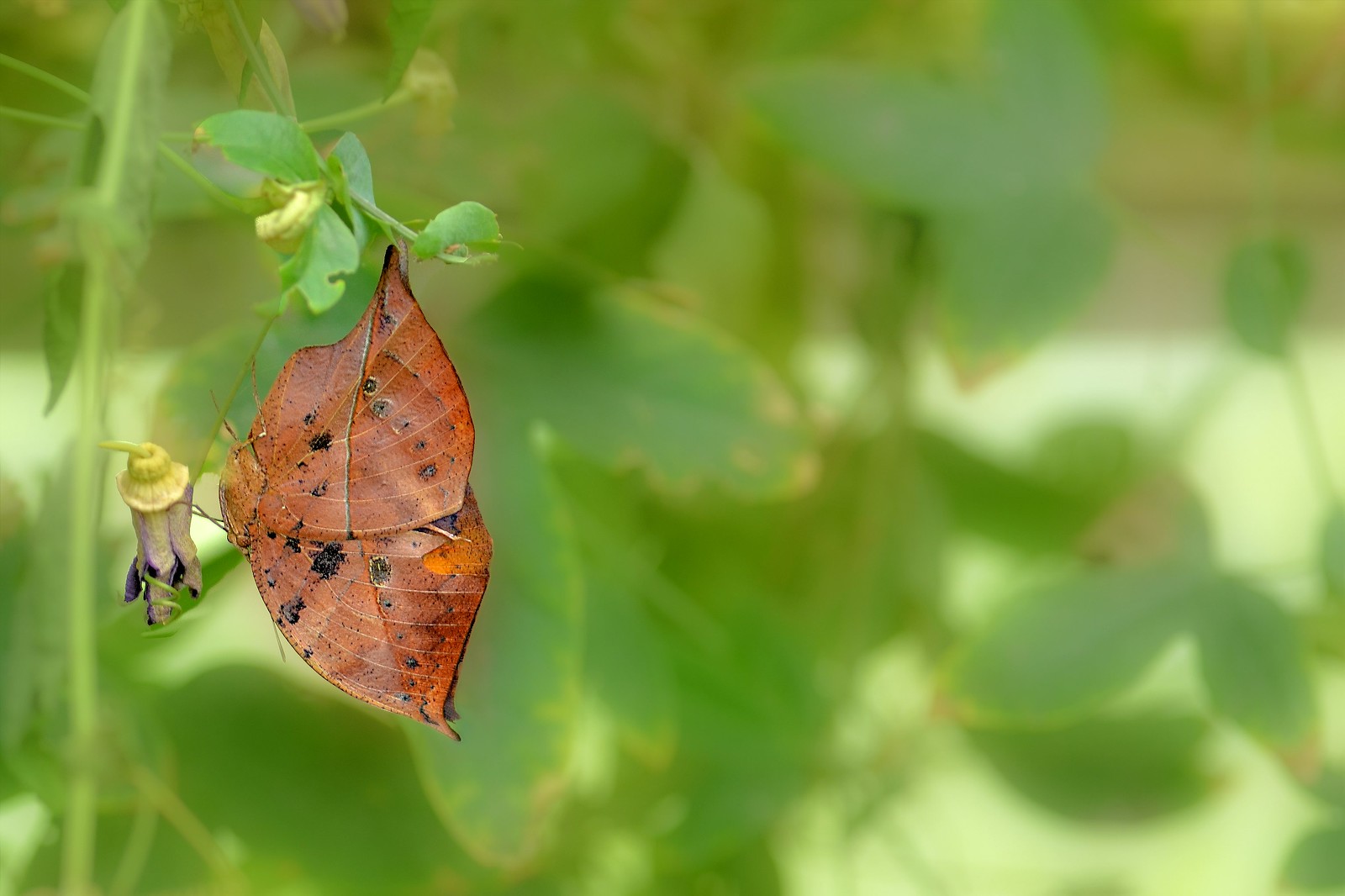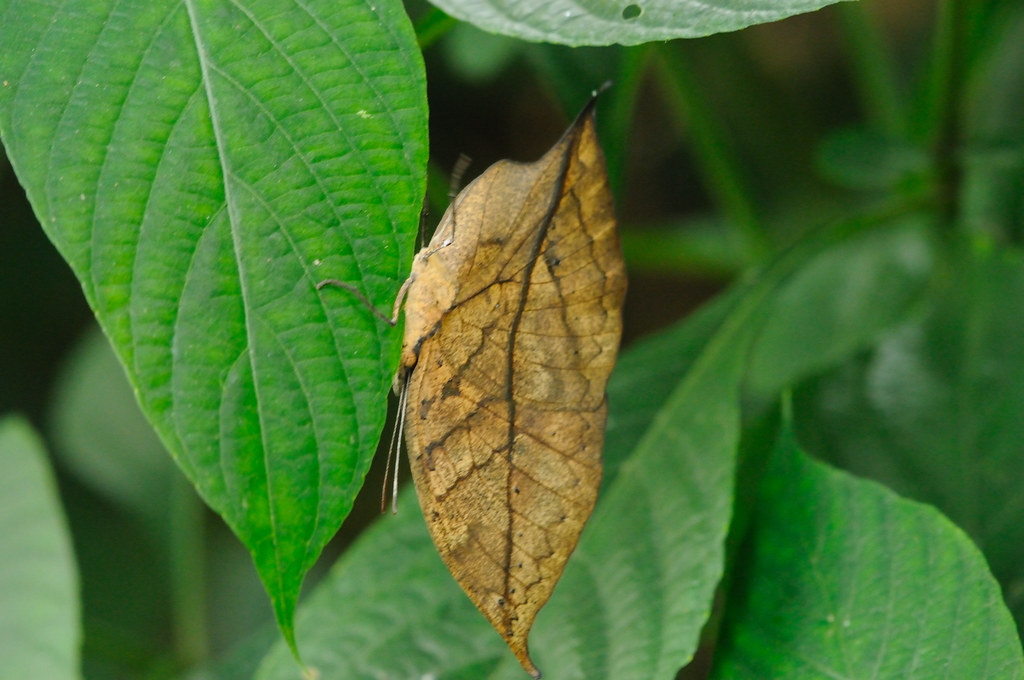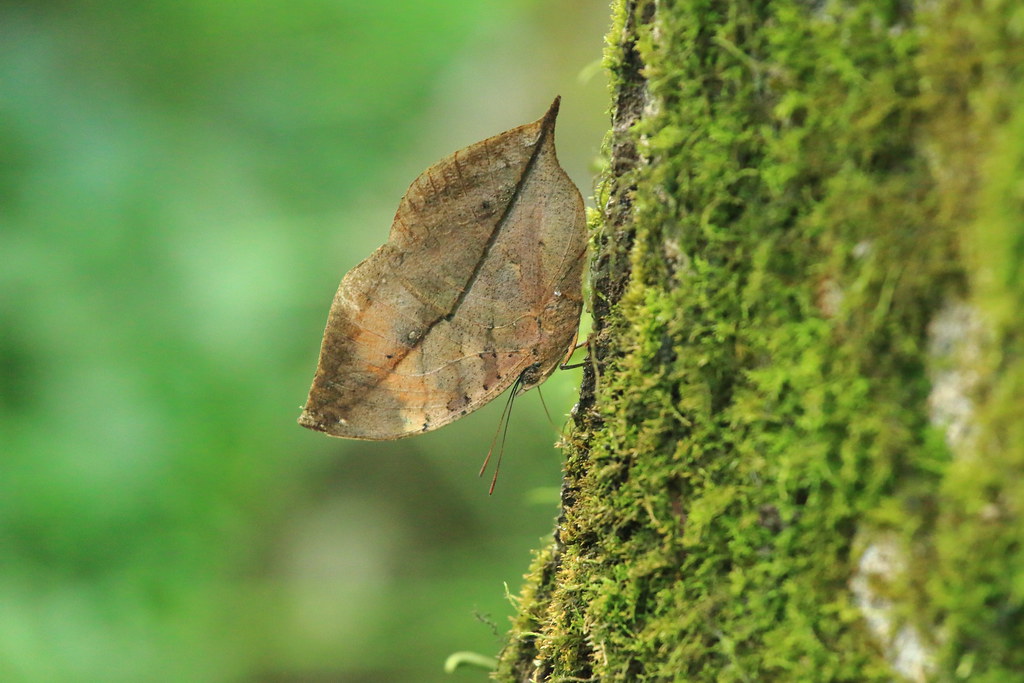The Dead Leaf Butterfly - Camouflage King of the Asian Tropics
Sunday, 1 July 2018
Although the title of this article has already given the game away, take a close look at the ‘leaf’ above. Dead and withered, its dark veins still stretch across the parchment thin remains of its once emerald resplendence. Yet a closer look reveals a head, eyes and legs. This isn’t at all what it appears to be – and that is exactly how nature intended.
Image Credit Wikimedia
This incredible butterfly can be found – if you look hard enough – from India to Japan; anywhere in the Asian tropics. Its taxonomic name is Kallima inachus but it is also known as the orange oakleaf or Indian oakleaf. Unsurprisingly, its most common name is the dead leaf butterfly. This disguise (mimesis) is intended to confound predators – you can’t eat what you can’t see. Yet just wait and see what appears once it opens its wings…
Image Credit Wikimedia
It’s a revelation – from leafy moribundity to lepidopteran renaissance in a flash of wings. Yet expectations are perhaps defied – rather than maintain its camouflage, the dead leaf reveals a black apex, a vivid orange band at its apex and a dark blue base. There are even two white eyespots – perhaps an additional form of mimicry designed to deter would-be predators.
Image Credit Wikimedia
Male and female dead leaf butterflies are similar – the causal viewer might only spot the difference in size: females are larger (and the apex of their forewing is longer too). Also, the females may be have a redder hue on the underside but although the sexes are similar the species has another remarkable trip up its sleeve. The dead leaf butterfly differs in both color and size depending on whether it emerges from its chrysalis in the dry or wet season.
Image 1 Image 2
Here, you can see the dry-season (left) and wet-season female.
Image 1 Image 2
This difference is not restricted to its top side. Here you can see the dry and wet season – the dry-season butterfly looks, frankly, dryer – the ‘leaf’ seems to have been desiccated by the sun whereas the wet-season butterfly looks as if it has just been caught in a shower.
Image Credit Wikimedia
Image Credit Wikimedia
The dead leaf is a powerful flier and can cover large distances. It is often targeted by birds on the wing and when it senses an avian attack the dead leaf flies erratically before dropping down in to the forest foliage as soon as possible. Once it has alighted on a tree it closes its wings and keeps as still as possible. Its attacker is then usually unable to locate it and must pursue its dinner elsewhere.
Image Credit Wikimedia
Image Credit fotopamas
Although it is not considered rare across much of its range, in China the dead leaf is listed as endangered. In many places it can have three generations in a year. Oddly, the second generation goes through diapause (a delay in development due to adverse conditions) and often overwinters until the spring when it resumes its lifecycle. The first and third generations tend not to diapause which indicates that their food sources must be plentiful at those times (as an aside, the dead leaf caterpillar is polyphagous – it’s not a fussy eater and will gobble any number of plant species).



We can only hope that the dead leaf butterfly will continue to confound its predators and thrive in the heart of the Asian tropics.
First Image Credit - Wikimedia
This incredible butterfly can be found – if you look hard enough – from India to Japan; anywhere in the Asian tropics. Its taxonomic name is Kallima inachus but it is also known as the orange oakleaf or Indian oakleaf. Unsurprisingly, its most common name is the dead leaf butterfly. This disguise (mimesis) is intended to confound predators – you can’t eat what you can’t see. Yet just wait and see what appears once it opens its wings…
Image Credit Wikimedia
It’s a revelation – from leafy moribundity to lepidopteran renaissance in a flash of wings. Yet expectations are perhaps defied – rather than maintain its camouflage, the dead leaf reveals a black apex, a vivid orange band at its apex and a dark blue base. There are even two white eyespots – perhaps an additional form of mimicry designed to deter would-be predators.
Image Credit Wikimedia
Male and female dead leaf butterflies are similar – the causal viewer might only spot the difference in size: females are larger (and the apex of their forewing is longer too). Also, the females may be have a redder hue on the underside but although the sexes are similar the species has another remarkable trip up its sleeve. The dead leaf butterfly differs in both color and size depending on whether it emerges from its chrysalis in the dry or wet season.
Image 1 Image 2
Here, you can see the dry-season (left) and wet-season female.
Image 1 Image 2
This difference is not restricted to its top side. Here you can see the dry and wet season – the dry-season butterfly looks, frankly, dryer – the ‘leaf’ seems to have been desiccated by the sun whereas the wet-season butterfly looks as if it has just been caught in a shower.
Image Credit Wikimedia
Image Credit Wikimedia
The dead leaf is a powerful flier and can cover large distances. It is often targeted by birds on the wing and when it senses an avian attack the dead leaf flies erratically before dropping down in to the forest foliage as soon as possible. Once it has alighted on a tree it closes its wings and keeps as still as possible. Its attacker is then usually unable to locate it and must pursue its dinner elsewhere.
Image Credit Wikimedia
Image Credit fotopamas
Although it is not considered rare across much of its range, in China the dead leaf is listed as endangered. In many places it can have three generations in a year. Oddly, the second generation goes through diapause (a delay in development due to adverse conditions) and often overwinters until the spring when it resumes its lifecycle. The first and third generations tend not to diapause which indicates that their food sources must be plentiful at those times (as an aside, the dead leaf caterpillar is polyphagous – it’s not a fussy eater and will gobble any number of plant species).



We can only hope that the dead leaf butterfly will continue to confound its predators and thrive in the heart of the Asian tropics.
First Image Credit - Wikimedia
Give a Gift
If you enjoyed this article, please consider making a gift to help Ark In Space to continue to bring you fascinating features, photographs and videos.
Thank you!











